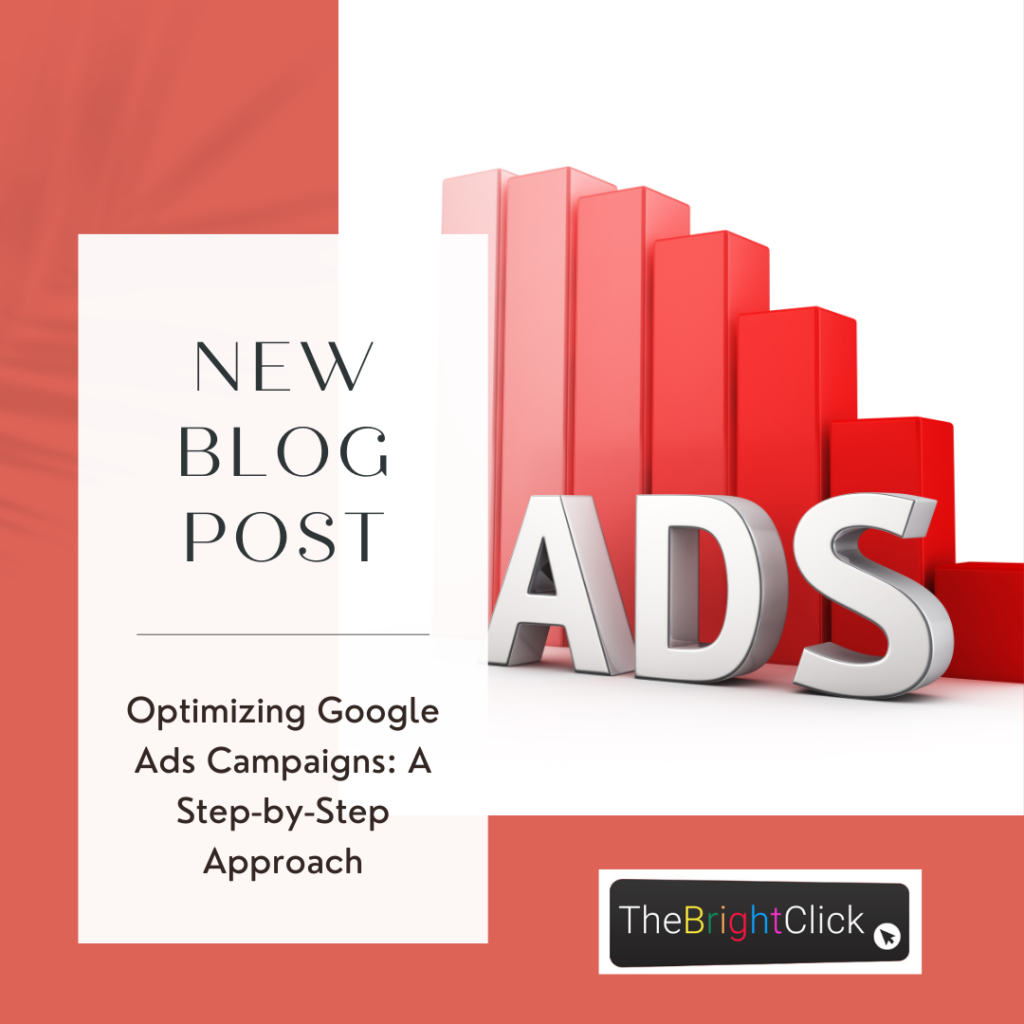In the competitive digital landscape, optimizing Google Ads campaigns is crucial for achieving desired outcomes and maximizing performance. This case study presents a step-by-step approach to effectively optimize your Google Ads campaigns. Following these strategies can improve your campaign’s performance and drive better results.
- Define Clear Goals: Before diving into optimization, it’s essential to establish clear goals for your Google Ads campaign. Whether it’s increasing website conversions, improving brand awareness, or driving sales, clearly defined objectives will guide your optimization efforts and help you measure success accurately.
- Conduct Thorough Keyword Research: Keyword research forms the foundation of a successful Google Ads campaign. Start by identifying a comprehensive list of relevant keywords using tools like Google Keyword Planner and competitor analysis. Choose a mix of high-intent, long-tail, and broad-match keywords to ensure your ads reach the right audience while maintaining cost efficiency.
- Create Compelling Ad Copy: Crafting compelling ad copy is crucial for driving engagement and click-through rates (CTR). To identify the most effective combinations, experiment with headlines, descriptions, and calls to action. Highlight unique selling points, address pain points, and create a sense of urgency to entice users to click on your ads.
- Refine Ad Targeting: Refining your ad targeting ensures that your ads are displayed to the most relevant audience. Analyze demographic data, customer behaviour patterns, and device preferences to optimize targeting settings. Leverage advanced targeting options such as location, audience, and device targeting to maximize relevancy and increase the chances of conversions.
- Implement Conversion Tracking: Implement conversion tracking to measure the effectiveness of your optimization efforts. Set up conversion goals within Google Ads to track critical actions such as form submissions, purchases, or sign-ups. Analyze conversion data to understand which keywords, ads, and landing pages drive the most conversions. This data will help you focus your optimization efforts on high-performing elements.
- Optimize Landing Pages: Landing pages are crucial in converting ad clicks into actions. Conduct A/B testing on your landing pages, experimenting with different layouts, content, and calls to action. Optimize your landing pages for relevance, speed, and a seamless user experience. Improving your landing page quality can lead to higher ad rankings, lower cost-per-click (CPC), and, ultimately, higher conversion rates.
- Monitor and Analyze performance: Regular monitoring and analysis of your campaign’s performance are essential for ongoing optimization. Track key metrics such as CTR, conversion rates, average position, and cost-per-conversion. Utilize Google Ads’ reporting and analytics tools to identify underperforming keywords, ads, or targeting settings. This data-driven approach will enable you to make informed adjustments and reallocate budgets to improve campaign performance.
- Continual Testing and Optimization: Optimization is ongoing. Continually test and optimize your Google Ads campaign by introducing new ad variations, adjusting bidding strategies, and exploring different ad extensions. Embrace split testing and experimentation to discover innovative approaches that enhance your campaign’s performance. Following this step-by-step approach to optimizing your Google Ads campaigns, you can maximize their effectiveness and achieve better results. At The Bright Click, a family-run digital marketing agency, we specialize in helping businesses optimize their Google Ads campaigns and drive exceptional performance. If you want expert guidance and support to improve your Google Ads strategy, contact us today to see how we can help you achieve your digital marketing goals. Let’s make your Google Ads campaigns shine!

